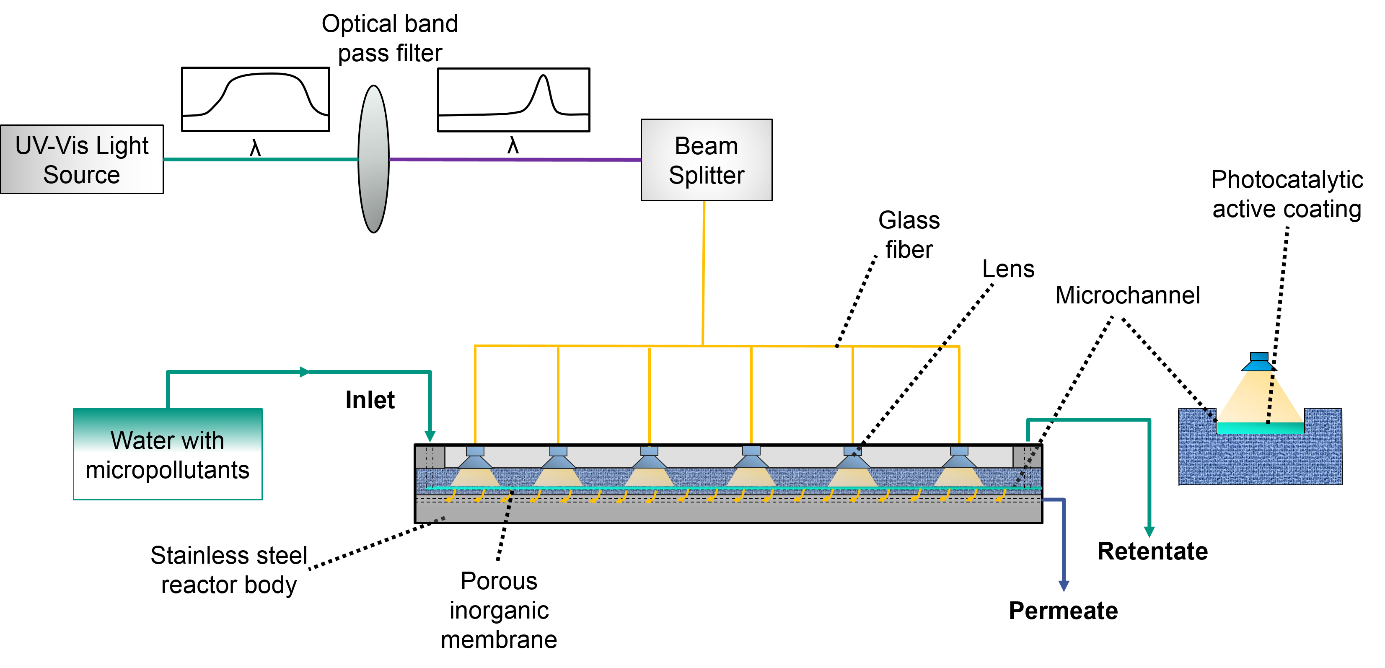Photochemical reactions can be greatly enhanced through the use of microstructured continuous flow reactors. Due to the small characteristic dimensions of falling films and microchannels, reactants can be illuminated intensively and uniformly. Due to the short distances for mass transfer, diffusive mixing occurs rapidly at this scale. Mass transport can be further accelerated via secondary flows created by tailored microstructured surfaces. Better illumination compared to classical apparatuses enables processes to be performed with higher reactant concentrations. Especially bimolecular reactions and heterogeneously catalyzed reactions can benefit from these conditions.
In the framework of the Helmholtz program “Science and Technology of Nanosystems” under the topic “Functionality by Design,” the Institute of Micro Process Engineering is investigating the immobilization of photocatalysts on membranes and potential applications such as their use in organic synthesis and the degradation of micropollutants from waste water.
In organic syntheses the use of membranes as catalyst carriers enables dosing a gas, such as oxygen for partial oxidation, precisely dispersed along the reactor. Thus, the gas concentration can be maximized in the vicinity of the catalyst leading to a maximization the rate of reaction.
In the photocatalytic degradation of micropollutants such as pharmaceuticals, e.g. through oxidation with oxygen and light, the degradation products can be continuously removed through the membrane.
For the immobilization of suitable catalysts on inorganic membranes, IMVT is intensively researching innovative and reproducible coating technologies such as chemical vapor deposition (CVD), magnetron sputtering, and ink jet printing. Via screening experiments parameters such as layer thickness, primary particle size, and layer porosity can be varied to create optimal catalytic layers by design.
For the investigation of fundamental phenomena in photocatalytic membrane reactors, the experimental setup shown in the figure below has been developed in close cooperation with the Institute of Functional Interfaces at the KIT. The light introduced into the system can be modulated according to wave length and intensity along the reaction channel, enabling the catalyst to be characterized under various illumination conditions, thus leading to optimized processes and optimized preparation of catalytic layers.
